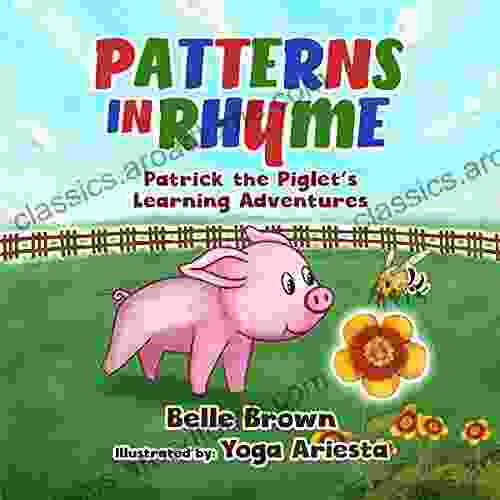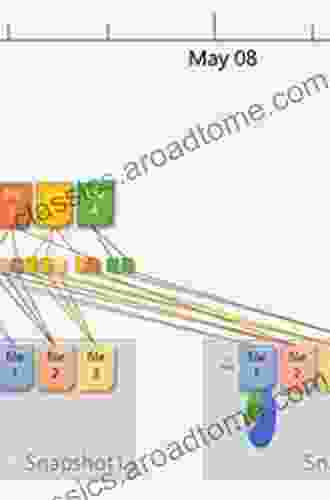Families and Farmhouses in Nineteenth Century America

4.5 out of 5
| Language | : | English |
| File size | : | 6842 KB |
| Text-to-Speech | : | Enabled |
| Print length | : | 288 pages |
| Lending | : | Enabled |
Nestled amidst rolling hills and vast fields, farmhouses served as the epicenters of family life in nineteenth century America. These humble abodes witnessed the rhythms of daily existence, the joys and challenges of raising a family, and the deep connections forged between people and the land. By exploring the intricate tapestry of family life within these farmhouses, we gain a profound understanding of the social, economic, and cultural forces that shaped rural America during this transformative era.
The Farmhouse as a Hub of Daily Life
The farmhouse was the heart of the family's world, a place where work and play intertwined seamlessly. The kitchen, with its wood-burning stove and simple furnishings, was the center of activity. Here, mothers prepared meals, baked bread, and tended to household chores, while children helped with tasks and shared stories.
The living room, often adorned with a patchwork quilt and a few treasured photographs, served as a gathering space for the family. Evenings were spent reading, singing, or playing games. The bedrooms were small and crowded, but they provided a sanctuary for rest and relaxation.
The Role of Women in the Farmhouse
Women played a pivotal role in the functioning of the farmhouse. They were responsible for maintaining the household, raising children, and contributing to the family's livelihood. They worked tirelessly in the kitchen, garden, and fields, their skills and knowledge essential to the survival of the family.
In addition to their domestic responsibilities, women also played an important role in community affairs. They often organized social events, provided support to neighbors in times of need, and engaged in local politics. Their resilience and adaptability were instrumental in the development of strong rural communities.
The Importance of Family in the Farmhouse
The family was the foundation of the farmhouse. Extended families often lived together under one roof, creating strong bonds and a sense of belonging. Children were raised in an environment where hard work, self-reliance, and community spirit were valued above all else.
The farmhouse provided a sense of security and stability for its occupants. It represented a place where traditions were passed down from generation to generation, and where the family's history was woven into the very fabric of the home.
The Impact of Agriculture on Family Life
Agriculture was the lifeblood of rural America in the nineteenth century. The rhythms of farm life dictated the daily routine of families. Farmers worked long hours in the fields, planting, harvesting, and tending to livestock. Their wives and children assisted with these tasks, creating a shared sense of purpose.
The success or failure of the farm had a profound impact on family life. Good harvests brought prosperity and a sense of accomplishment, while crop failures or economic downturns could lead to financial hardship and stress. The close relationship between agriculture and family life shaped the values, beliefs, and aspirations of generations of rural Americans.
The Farmhouse as a Museum of History
Today, many farmhouses have been transformed into museums, preserving the legacy of rural America. By exploring these historic homes, we can step back in time and experience the lives of the families who lived within their walls.
These museums offer a glimpse into the material culture of the past, with exhibits showcasing furniture, tools, clothing, and other artifacts that tell the story of daily life on the farm. They also provide opportunities to learn about the agricultural practices, social customs, and community values that prevailed during this era.
The Enduring Legacy of the Farmhouse
The farmhouse remains an iconic symbol of American rural life. Its enduring legacy reflects the values and traditions that shaped our nation's history. By understanding the role of families and farmhouses in nineteenth century America, we gain a deeper appreciation for the agrarian roots of our society and the resilience of those who lived on the land.
The farmhouses of nineteenth century America were more than just buildings; they were the centers of family life, the engines of agricultural production, and the repositories of cultural traditions. By exploring the intricate connections between families and farmhouses, we unlock a rich tapestry of social history, unraveling the threads that bound rural communities together and shaped the destiny of a young nation. And as we look upon these historic homes today, we are reminded of the enduring power of family, the importance of hard work, and the timeless connection between people and the land.
4.5 out of 5
| Language | : | English |
| File size | : | 6842 KB |
| Text-to-Speech | : | Enabled |
| Print length | : | 288 pages |
| Lending | : | Enabled |
Do you want to contribute by writing guest posts on this blog?
Please contact us and send us a resume of previous articles that you have written.
 Book
Book Novel
Novel Page
Page Chapter
Chapter Text
Text Story
Story Genre
Genre Reader
Reader Library
Library Paperback
Paperback E-book
E-book Magazine
Magazine Newspaper
Newspaper Paragraph
Paragraph Sentence
Sentence Bookmark
Bookmark Shelf
Shelf Glossary
Glossary Bibliography
Bibliography Foreword
Foreword Preface
Preface Synopsis
Synopsis Annotation
Annotation Footnote
Footnote Manuscript
Manuscript Scroll
Scroll Codex
Codex Tome
Tome Bestseller
Bestseller Classics
Classics Library card
Library card Narrative
Narrative Biography
Biography Autobiography
Autobiography Memoir
Memoir Reference
Reference Encyclopedia
Encyclopedia Amy Levad
Amy Levad Ann Hewetson
Ann Hewetson Sharon Promislow
Sharon Promislow Jocelyn Hemming
Jocelyn Hemming Angel David Nieves
Angel David Nieves Stan Campbell
Stan Campbell Jabin Sims
Jabin Sims Andrew Laszlo
Andrew Laszlo Andrew Cole
Andrew Cole Amber K
Amber K Madhavi Menon
Madhavi Menon Angelique Young
Angelique Young Susan Mahler Zneimer
Susan Mahler Zneimer Mike Davis
Mike Davis David Ray Griffin
David Ray Griffin Ana Reisdorf Ms Rd
Ana Reisdorf Ms Rd Bill Laws
Bill Laws Nathan Crick
Nathan Crick Angie Welty
Angie Welty Andrew Frank
Andrew Frank
Light bulbAdvertise smarter! Our strategic ad space ensures maximum exposure. Reserve your spot today!

 Charles BukowskiProm Night: A Cultural Phenomenon that Shapes Youth Schools and Popular...
Charles BukowskiProm Night: A Cultural Phenomenon that Shapes Youth Schools and Popular... Jack ButlerFollow ·7.1k
Jack ButlerFollow ·7.1k Harold PowellFollow ·18.1k
Harold PowellFollow ·18.1k Alex ReedFollow ·12.2k
Alex ReedFollow ·12.2k Eliot FosterFollow ·18.4k
Eliot FosterFollow ·18.4k Robbie CarterFollow ·12.1k
Robbie CarterFollow ·12.1k Boris PasternakFollow ·8.9k
Boris PasternakFollow ·8.9k Stan WardFollow ·17.1k
Stan WardFollow ·17.1k Thomas PynchonFollow ·9.9k
Thomas PynchonFollow ·9.9k

 Braden Ward
Braden WardThe True Story of Murder and Betrayal
In a small town where...

 W. Somerset Maugham
W. Somerset MaughamUnraveling the Complexities of Human Language: A...
Language is a fundamental aspect of human...

 Ibrahim Blair
Ibrahim BlairTrue Crime Tales That Will Keep You on the Edge of Your...
Prepare to be...

 Rick Nelson
Rick NelsonPatterns In Rhyme: A Journey of Discovery with Patrick...
Welcome to the...

 Edgar Hayes
Edgar HayesWithout Pity: Unmasking the Evil Within
In the realm of true...

 Cooper Bell
Cooper BellFannie Lou Hamer's Indelible Legacy: Unraveling the...
The Black Freedom Movement, a pivotal...
4.5 out of 5
| Language | : | English |
| File size | : | 6842 KB |
| Text-to-Speech | : | Enabled |
| Print length | : | 288 pages |
| Lending | : | Enabled |









